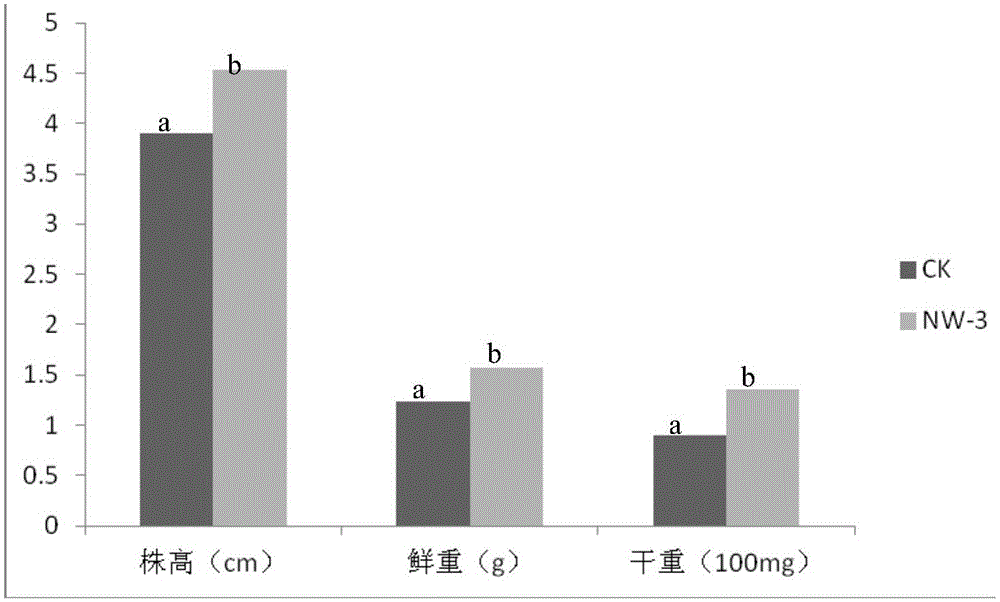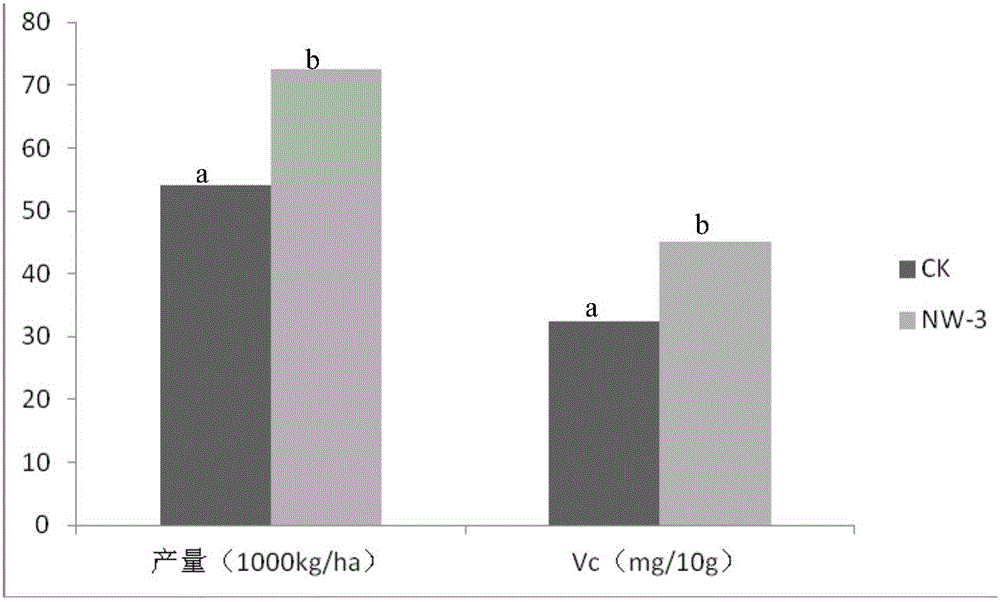Efficient plant growth promoting bacterium and application thereof in research and development of bio-compound fertilizer
A biofertilizer, a technology for promoting plant growth, applied in plant growth regulators, methods based on microorganisms, biochemical equipment and methods, etc. There are few types of growth-promoting strains to achieve the effect of promoting sustainable agricultural development, improving crop quality, and reducing soil degradation
- Summary
- Abstract
- Description
- Claims
- Application Information
AI Technical Summary
Problems solved by technology
Method used
Image
Examples
Embodiment 1
[0018] The screening method of embodiment 1 bacterial strain.
[0019] The specific method is as follows:
[0020] The culture medium formulation (w / v) used wherein:
[0021] Ashubei medium: glucose 1%, sodium chloride 0.02%, potassium dihydrogen phosphate 0.02%, calcium carbonate 0.5%, magnesium sulfate heptahydrate 0.02%, calcium sulfate 0.01%, agar powder 2%. The pH of the medium is 7.2,
[0022] Solid plate LB (Luria-Bertani) medium: sodium chloride 10%, tryptone 10%, yeast extract 5%, agar 2%, pH 7.5.
[0023] Liquid LB medium: 10% sodium chloride, 10% tryptone, 5% yeast extract, pH 7.5. Screening steps:
[0024] 1. Primary screening of solid plate culture medium
[0025] Samples were collected from lake water of Tianjin Institute of Industrial Biotechnology, Chinese Academy of Sciences, and serially diluted. The diluted solution was spread on Asbe solid medium, and cultured at 30°C for 72 hours. When a single colony appears on the Ashubei solid medium, transfer the...
Embodiment 2
[0030] This example illustrates the experimental application of the screened plant growth-promoting bacteria in pot experiments.
[0031] The specific method is as follows:
[0032] The soil in Anshan, Liaoning was selected as the soil for testing. The soil properties: pH6.8; organic matter 2.35%; total nitrogen 142mg / kg; total phosphorus 107mg / kg; total potassium 310mg / kg; available nitrogen 147mg / kg; Available potassium 376mg / kg. The soil to be tested was dried in a cool and dark place, and passed through a 1mm sieve. Mix every 200g of soil with 1.1g of tricalcium phosphate.
[0033] Cucumber Zhongnong No. 8 was used as the test plant. After the cucumber seeds were bred for 7 days, plants with the same size were selected as experimental plants. The nitrogen-fixing bacteria screened were carried out in a pot experiment, so as to screen out the efficient nitrogen-fixing bacteria that can promote the growth of plants. Every 200g of test soil is packed into flowerpots with ...
Embodiment 3
[0037] This example illustrates the growth-promoting properties of the screened plant growth-promoting bacteria Ochrobactrumsp.NW-3.
[0038] The specific method is as follows:
[0039] Determination of indole acetic acid: Inoculate the nitrogen-fixing bacteria into King's medium, and cultivate them on a shaker at 200 rpm at 30°C for 24 hours. Take 3ml of the bacterial solution and centrifuge at 12000rpm for 15min to remove the precipitate. Take 1ml of supernatant and add 2ml of Salkowski's reaction solution. After mixing and reacting in the dark for 30 minutes, observe its discoloration. If the color turns pink, it is considered to produce 3-indoleacetic acid. The darker the color, the stronger the ability to secrete 3-indoleacetic acid; 3-Indoleacetic acid.
[0040] Detection of siderophore: Culture nitrogen-fixing bacteria in beef extract peptone liquid medium for 24 hours on a shaking table, absorb 2 μL of the bacterial solution and spot it on a CAS plate, culture at 30...
PUM
 Login to View More
Login to View More Abstract
Description
Claims
Application Information
 Login to View More
Login to View More - R&D
- Intellectual Property
- Life Sciences
- Materials
- Tech Scout
- Unparalleled Data Quality
- Higher Quality Content
- 60% Fewer Hallucinations
Browse by: Latest US Patents, China's latest patents, Technical Efficacy Thesaurus, Application Domain, Technology Topic, Popular Technical Reports.
© 2025 PatSnap. All rights reserved.Legal|Privacy policy|Modern Slavery Act Transparency Statement|Sitemap|About US| Contact US: help@patsnap.com


